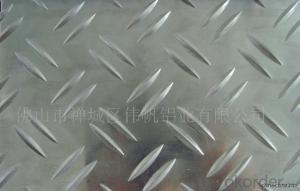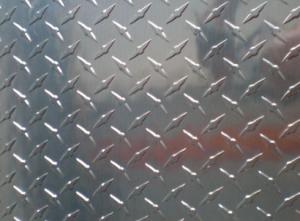3 By 8 Aluminum Sheets for Train and Bus with Best Price
- Loading Port:
- Shanghai
- Payment Terms:
- TT OR LC
- Min Order Qty:
- 5 m.t.
- Supply Capability:
- 10000 m.t./month
OKorder Service Pledge
OKorder Financial Service
You Might Also Like
Specification
1.Structure of Aluminum Plate for Train and Bus Description:
We can produce aluminum sheet,color aluminum sheet and plastic composite panel base material. They are widely used in construction and decoration, hardware and electric appliances manufacture, automobile manufacture and other industrial and civil purposes, such as electronic capacitor, rice cooker, refrigerator, computer casting, lamp shade, air-conditioner, cosmetics cover and box, air-conditioner radiator, inner container of disinfecting cabinet, ceiling board, automobile motherboard, cover board and top board, etc.
2.Main Features of Aluminum Plate for Train and Bus :
Eye to wall or Eye to Sky
No scratches, white corrosion, water stain
High Quality
Competitive Price
3. Aluminum Plate for Train and Bus Images:



4. Aluminum Plate for Train and Bus Specification:
| Alloy No. | Thickness (mm) | Width (mm) | Length (mm) | Temper | |
| A1050,A1060, A1070,A1100 | 0.2-100 | 20-2200 | 20-8000 | O,H12,H22,H14,H16,H18, H24,H26,etc | |
| 3A21,A3003,A3105,A3004 | 0.2-100 | 20-2200 | 20-8000 | O,H14,H18,H24,etc | |
| A5052 ,A5005,A5083,A5754 | 0.2-100 | 20-2200 | 20-8000 | O,H18,H24,H32,H34,H111,H112 ,etc | |
| A6061,A6082,A6063 | 0.2-200 | 20-2200 | 20-8000 | T4,T6, T651,etc | |
| A8011 | 0.2-100 | 20-2200 | 20-8000 | O,H12,H22,H14,H16,H18,H24,H26, etc | |
5.FAQ
Q1.How long have you been in this product?
A1:More than 10 years.
Q2. What's the minium quantity(MOQ)?
A2. 5 Metric tons
Q3. How long is shipping time?
A3. 7 (ready-made products)-25 days(OEM)
Q4. How do you guarantee the quality?
A4. 1. Cooperating and Exchaning experience with sevral quoted aluminum companies
2. Japanese and Swiss production line and skilled works (regular training and testing)
3. more than 10 years production experience.
Q5. Do you have after sale service?
A5. Yes. Any quality problem occurs within one year, pls take photoes,we will be responsible.
- Q: What are the standard sizes of aluminum sheets?
- Aluminum sheet sizes can differ based on the manufacturer and specific needs. Nevertheless, there are several standard sizes commonly found for aluminum sheets. These include 4 feet by 8 feet (1.2 meters by 2.4 meters), 4 feet by 10 feet (1.2 meters by 3 meters), and 5 feet by 10 feet (1.5 meters by 3 meters). These sizes are widely utilized across various industries and are easily accessible in the market. Furthermore, specialized aluminum sheet suppliers can provide custom sizes tailored to meet specific project requirements.
- Q: How do you prevent galvanic corrosion when using aluminum sheets with other metals?
- To prevent galvanic corrosion when using aluminum sheets with other metals, there are several measures that can be taken: 1. Use a protective coating: Applying a protective coating, such as paint or anodizing, on the aluminum surface can create a barrier between the aluminum and other metals, preventing direct contact and reducing the risk of galvanic corrosion. 2. Insulate the metals: Placing a non-conductive insulating material, such as rubber or plastic, between the aluminum and other metals can help isolate them and prevent galvanic corrosion. 3. Choose compatible metals: Selecting metals that are less prone to galvanic corrosion when in contact with aluminum can reduce the risk. For example, stainless steel, titanium, or other corrosion-resistant alloys are often preferred when working with aluminum sheets. 4. Use dielectric materials: Inserting a dielectric material, such as nylon or Teflon washers, between the aluminum and other metals can act as a barrier and inhibit the flow of electrical current, thereby preventing galvanic corrosion. 5. Control the environment: Avoiding environments with high moisture levels or extreme temperature variations can help reduce the likelihood of galvanic corrosion. Proper ventilation and moisture control can also play a significant role in preventing this type of corrosion. It is important to note that the best preventive measures may vary depending on the specific application and the types of metals involved. Consulting with a materials engineer or corrosion specialist can provide valuable guidance in selecting the most appropriate strategies to prevent galvanic corrosion in a particular scenario.
- Q: Aluminium magnesium alloy plate, 5052 aluminium plate, 5005 aluminium plate. 5252 aluminum plate performance and use
- Material details1 and 5052 aluminum magnesium alloy aluminum plate: 5052 aluminum plate belongs to the aluminum magnesium alloy aluminum plate, the use scope is widespread, especially in the construction industry cannot leave the alloy aluminum plate, also is the most promising aluminum alloy plate. The main alloy element of 5052 aluminum plate is magnesium, which has good corrosion resistance, good weldability, cold workability and medium strength.5052 aluminum plate is commonly used in the manufacture of aircraft and car fuel tanks, oil pipes, as well as traffic vehicles, ships sheet metal parts, instruments, street lamps, brackets and rivets, hardware, electrical appliances, such as shell.2 and 5005 aluminum magnesium alloy aluminum plate: 5005 aluminum plate, band strength and 3003, welding resistance, good processing, 5005 aluminum plate and 3003 alloy similar, with moderate strength and good corrosion resistance. The anodic oxide film is more bright than the oxide film on the 3003 alloy and is in harmony with the tone of the 6063 alloy.5005 aluminum plate is often used as conductor, cooker, instrument panel, shell and building decoration, building materials, internal and external materials, vehicle materials and so on.3 and 5754 aluminum magnesium alloy aluminum sheet: 5754 aluminum alloy has the characteristics of moderate strength, good corrosion resistance, weldability and easy processing and forming. It is a typical alloy in Al Mg alloy. In foreign countries, 5754 Aluminum Alloy plates of different heat treatment condition is the automobile manufacturing industry (car door, mould, seals), main materials used for canning industry.5754 aluminum is widely used in welding structure, storage tank, pressure vessel, ship structure and marine facilities, transport tanks as well as for the requirements of good processability, excellent corrosion resistance, high fatigue strength, high solderability and moderate intensity static situations.
- Q: What are the various types of insulation materials that can be combined with aluminum sheets for thermal or acoustic insulation purposes?
- <p>There are several types of insulation that can be used in conjunction with aluminum sheets, including: 1. Polyurethane foam, which provides excellent thermal insulation and can be bonded to aluminum sheets. 2. Mineral wool, a fire-resistant material that offers both thermal and acoustic insulation. 3. Polyisocyanurate, known for its high R-value and can be laminated to aluminum for added strength. 4. Extruded polystyrene, which is lightweight and provides good thermal resistance. 5. Fiberglass, a versatile insulation material that can be combined with aluminum for various applications. Each type has its specific properties and applications, making them suitable for different environments and insulation needs.</p>
- Q: Can aluminum sheet be used for heat exchangers?
- Yes, aluminum sheet can be used for heat exchangers. Aluminum is a commonly used material for heat exchangers due to its excellent thermal conductivity, light weight, and corrosion resistance. The high thermal conductivity of aluminum allows for efficient transfer of heat between fluids, making it suitable for various heat exchange applications. Additionally, aluminum is available in different alloys and thicknesses, providing flexibility in design and customization for specific heat exchanger requirements. Overall, aluminum sheet is a popular choice for heat exchangers in industries such as automotive, HVAC, and aerospace.
- Q: In which autocomponents usage of aluminium is better or otherwise?
- Aluminium is lighter as well as stronger than CI. Thats the reason most of the Automobile manufacturers use Aluminium for car bodies while they use cast iron for the underframes and internal chassis....NMN
- Q: 6061-T6 can aluminum sheets be bent?
- You ask if the two batch of aluminum material has been aging, the hardness of the aluminum after aging is higher than before the aging. Another aluminum material from the extrusion after the storage time and environment also related. You can measure the hardness of the two batch of aluminum.
- Q: Can aluminum sheets be etched or engraved?
- Yes, aluminum sheets can be etched or engraved. Etching or engraving on aluminum sheets is a process that involves removing some of the material from the surface using acid or a high-powered laser. This can be done to create intricate designs, patterns, or even text on the aluminum sheet. The etching or engraving process can be used for various applications, such as signage, decorative pieces, or industrial parts. The resulting etched or engraved design on the aluminum sheet can be further enhanced by adding color or other finishes to create a desired look.
- Q: What are the different methods for cutting aluminum sheets?
- There are several methods commonly used for cutting aluminum sheets. 1. Shearing: This method involves using a sharp blade to make a straight cut through the aluminum sheet. Shearing is typically used for thinner sheets and produces clean, straight cuts. 2. Sawing: Sawing is another method used to cut aluminum sheets. It involves using a saw blade with small teeth to cut through the material. Sawing can be done manually or with the help of power tools such as band saws or circular saws. 3. CNC Machining: Computer Numerical Control (CNC) machining is a highly precise method for cutting aluminum sheets. It involves the use of a computer-controlled machine that follows programmed instructions to cut the sheet into the desired shape. CNC machines can create complex cuts and shapes with high accuracy. 4. Laser Cutting: Laser cutting is a non-contact method that uses a high-powered laser to cut through aluminum sheets. The laser beam melts or vaporizes the aluminum, creating a clean and precise cut. Laser cutting is commonly used for intricate designs and can be done with a high level of precision. 5. Waterjet Cutting: Waterjet cutting uses a high-pressure jet of water mixed with an abrasive material to cut through aluminum sheets. This method is versatile and can be used for a wide range of materials and thicknesses. Waterjet cutting produces clean cuts without generating heat, making it suitable for heat-sensitive materials. 6. Plasma Cutting: Plasma cutting involves the use of a high-temperature plasma arc to cut through aluminum sheets. The plasma arc melts the metal and blows away the molten material, creating a cut. Plasma cutting is commonly used for thicker aluminum sheets and can be done manually or with the help of CNC machines. These methods offer different levels of precision, speed, and suitability for different sheet thicknesses and designs. The choice of cutting method depends on factors such as the desired cut quality, the thickness of the aluminum sheet, and the specific requirements of the project.
- Q: Yesterday I picked up an 1988 performance bike. I bought it for the parts. It rode really good and now I'm deciding to keep it as is but I'm wondering if the bike is safe to ride. I've hear of aluminum horror stories and I'm assuming old aluminum isn't asnymore safe.Should I toss the frame and put the parts on a steel frame I have or ride it and not worry about it failing.
- nah, it;s fine i have a 1999 GT al frame with 44000 miles ain;t dead or cracked yet carbon is the thing with the real horror stories Should I toss the frame and put the parts on a steel frame I have or ride it and not worry about it failing. --no, too much trouble for nothing wle
Send your message to us
3 By 8 Aluminum Sheets for Train and Bus with Best Price
- Loading Port:
- Shanghai
- Payment Terms:
- TT OR LC
- Min Order Qty:
- 5 m.t.
- Supply Capability:
- 10000 m.t./month
OKorder Service Pledge
OKorder Financial Service
Similar products
Hot products
Hot Searches
Related keywords




























